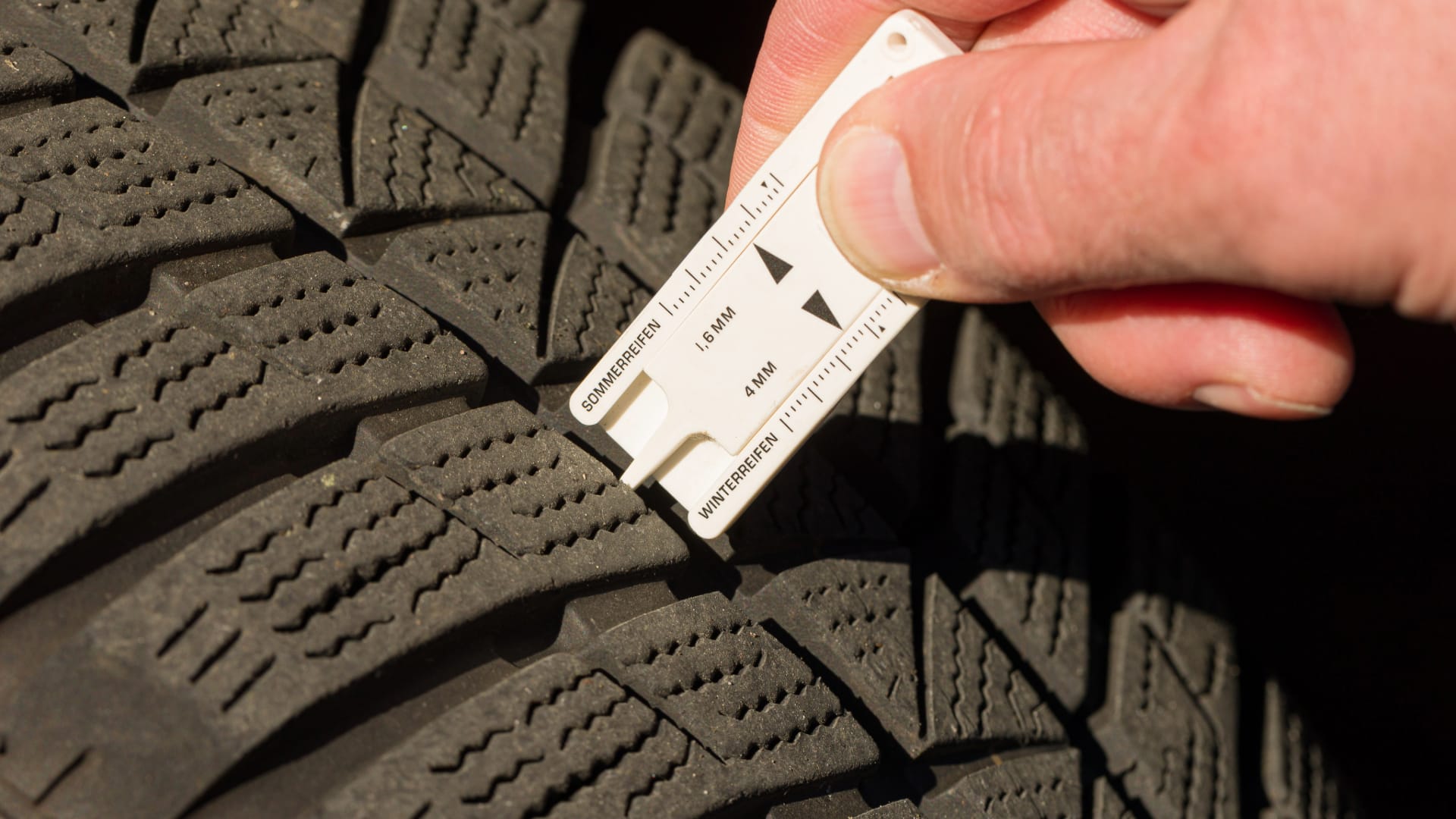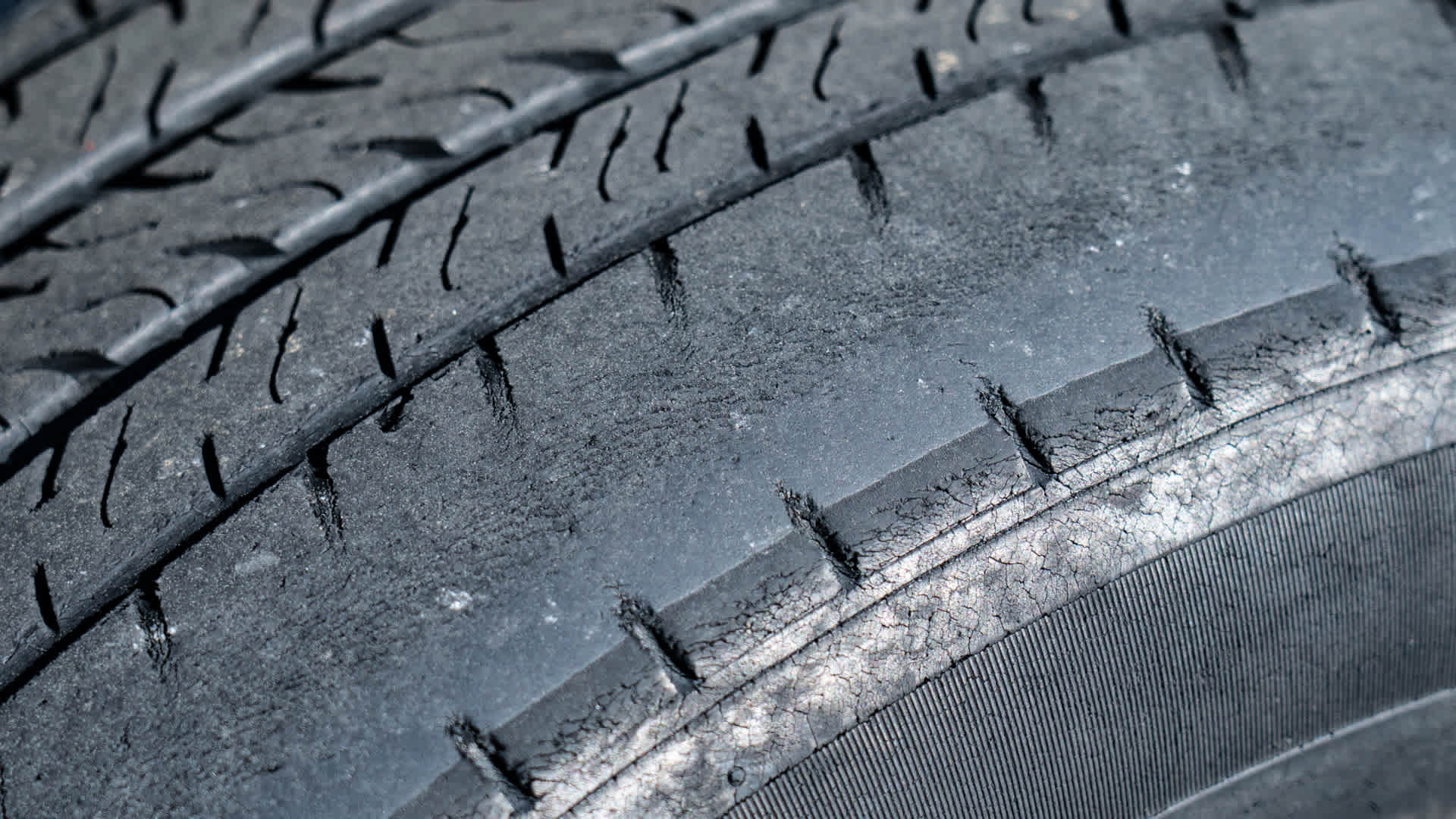Tire Maintenance & Safety
How to Know When It's Time for Tire Replacement

Best price guarantee
Tire replacement coverage
24/7 roadside assistance
Easy returns
Tire Maintenance & Safety

Your tires do much more than just get you from point A to point B—they’re the only part of your car that touches the road. That means they greatly influence how safe, smooth, and efficient your ride is. But let’s be honest: tire maintenance isn’t always at the top of most drivers' minds.
Skipping regular tire care or waiting too long to replace worn-out treads can lead to serious issues— poor handling, reduced fuel economy, or a higher risk of accidents. That’s why knowing when it’s time for new tires is important.
In this article, we’ll break down the telltale signs that your tires might be ready for a replacement so you can stay ahead of problems and keep your vehicle running at its best.
Tire replacement is just what it sounds like: swapping your old, worn, or damaged tires for new ones. But it’s more than just a routine swap; it’s an essential part of keeping your vehicle safe and smooth and performing at its best.
Replacing your tires usually starts with a close look at the ones you’ve got. That means checking the tread depth, looking for cracks or bulges in the sidewalls, and paying attention to how evenly the tires are wearing. These signs can help you know when to make a change before those issues become bigger (and more expensive) problems. Replacing your tires on time doesn’t just make your car safer; it can also improve your fuel economy, give you better traction, and make your ride feel more comfortable. Plus, newer tires often come with updated tread designs and better rubber compounds, which means better grip and control in all driving conditions.
So, while it might not be the most exciting part of car care, timely tire replacement can make a big difference for your safety, wallet, and peace of mind.
Replacing your tires isn’t just about keeping your car looking sharp—it’s about staying safe and ensuring your vehicle performs how it should. Over time, your tires naturally wear down from everyday driving. As the tread fades, so does your grip on the road, making it harder to stop quickly or stay in control, especially in rain, snow, or when taking tight turns.
Worn or damaged tires also increase the risk of blowouts, which can happen without warning and are especially dangerous at higher speeds. That’s why routine tire checks are so important. They help catch early signs of trouble, like thinning tread, sidewall cracks, or uneven wear, so you can replace your tires before something goes wrong.
Plus, fresh tires can save you money at the pump. When your tires are in good shape and properly inflated, your engine doesn’t have to work as hard to keep you moving. That means better gas mileage and fewer emissions—a win for your wallet and the environment.
In short, replacing your tires at the right time helps you stay safe, drive smoothly, and get more out of every mile.
Knowing when to replace your tires is key to keeping your drive smooth, safe, and stress-free. By looking for a few common signs, you can catch tire issues early—before they become bigger (and more expensive) problems. Making these quick checks part of your regular car care routine goes a long way in keeping your tires healthy and your ride reliable.
Your tire’s tread is what keeps you grounded—literally. It helps you grip the road, especially in rain or snow. A quick way to check tread depth is with a gauge (or even a penny in a pinch). If your tread is less than 2/32 of an inch, it’s time to start shopping for new tires. Most tires also have built-in tread wear indicators—small bars across the grooves—that show up once the tread is worn down.
Give the sidewalls of your tires a once-over now and then. Look for cracks, cuts, or bulges; these could be signs of aging or damage that could lead to a blowout. If something looks off, don’t ignore it. It is better to be safe than stranded on the side of the road.
Even if your tires look okay, they don’t last forever. Most should be replaced somewhere between six and ten years after the manufacturing date (you can find this info stamped on the sidewall). Also, keep an eye on how evenly they’re wearing. Uneven wear might point to alignment issues or improper inflation. Regular tire rotations and alignments can help keep everything wearing nicely and evenly.
If your ride suddenly feels bumpier or starts pulling to one side, or you notice new vibrations, your tires might be trying to tell you something. These changes can signal problems like tire damage or misalignment, and getting them checked out sooner rather than later is best.
1. Check Your Tread Depth

Your tire tread does more than just look rugged; it helps your car grip the road and stop safely, especially in wet conditions. The quarter test is a super simple way to check your tread at home. Just grab a quarter and stick it into one of the grooves with Washington’s head facing down. If you can see the top of his head, it’s time to start thinking about a new set of tires.
Want a more accurate read? A tread depth gauge is a handy little tool that gives you a clear picture of how much tread you’ve got left—and whether it’s wearing evenly across the tire. Uneven wear can indicate alignment issues or under-inflation, so it's worth checking.
Staying on top of tread depth helps your car handle better, stop more quickly, and keeps you from sliding or hydroplaning in the rain. Plus, well-maintained tires can even help with fuel efficiency. So, keeping those grooves in good shape? Worth it.
2. Check for Sidewall Damage
The sidewalls of your tires do more than just hold everything together; they help support your vehicle’s weight and play a big role in overall safety. Unlike the tread, the sidewalls are more vulnerable to damage from curbs, potholes, and harsh weather. That’s why giving them a quick check now and then is a smart move.
When you’re looking over your tires, keep an eye out for cuts, cracks, bulges, or any unusual marks. For example, a bulge could mean internal damage, like a separation in the tire’s layers, which can be dangerous and lead to a blowout. Even smaller abrasions or scuffs can weaken the sidewall over time, especially when driving under pressure (literally).
Damaged sidewalls can also cause slow air leaks, making it harder to keep your tire pressure where it should be, which, in turn, can mess with your fuel economy and handling. That’s why it’s a good habit to include a quick sidewall inspection in your regular car checks.
It’s best not to take any chances if you notice anything unusual. Replacing a compromised tire can save you from bigger (and more expensive) problems down the road while keeping your ride safe and reliable.
3. Keep an Eye on Tire Age
Even if your tires look fine on the outside, age can quietly take a toll on their performance and safety. That’s because tire rubber naturally breaks down over time—whether you’re driving daily or your car’s been parked for months. As tires age, the rubber hardens and loses flexibility, so they won’t grip the road either. This can lead to longer stopping distances or slipping, even if the tread still looks good.
To check how old your tires are, look for the DOT code stamped on the sidewall. The last four digits tell you the week and year the tire was made—so, for example, “2319” means it was manufactured in the 23rd week of 2019. It’s a quick way to understand whether your tires are approaching the end of their lifespan.
Most experts recommend closely monitoring your tires after about five to six years. Once they hit the 10-year mark, it’s time to replace them—no matter how much tread is left.
By staying on top of tire age, you’re not just checking a box on your maintenance list—you’re helping prevent surprise issues, keeping your ride safe, and getting the best performance out of your vehicle.
4. Watch for Uneven Tire Wear
Uneven tire wear is more than just a cosmetic issue—it’s your car’s way of telling you that something’s off. Whether it’s alignment problems, suspension wear, or tire pressure issues, spotting irregular wear early can save money and help keep your vehicle running smoothly and safely.

Misalignment: If your wheels aren’t properly aligned, your tires may wear down faster on one edge. This can happen from everyday bumps like hitting potholes or curbs and often causes your car to pull to one side.
Improper Inflation: Too much air? The center of your tire will wear out quicker. Too little? The outer edges take the hit. Either way, your ride gets bumpier, your gas mileage drops, and your tires won’t last as long.
Suspension Issues: Worn-out suspension parts can cause the tire to hit the road unevenly, wearing the tread in strange patterns and making your drive less comfortable.
Start by rotating your tires every 5,000 to 8,000 miles. This allows each tire to be in every position on the car, helping them wear down more evenly.
It’s also a good idea to check your alignment regularly, especially if you notice the car pulling to one side or feeling off-balance. Don’t forget your suspension: worn shocks or struts can also mess with your tire wear.
By staying ahead of uneven wear, you’ll get more life out of your tires, enjoy better handling, and avoid unnecessary repairs. It’s a small bit of upkeep that goes a long way in keeping your car safe and efficient.
5. Feel Vibration or Sloppy Handling? It Might Be Your Tires
If your car starts to shake or feel off while driving, it could be more than just an annoyance; it might be your tires trying to tell you something. Vibration, especially at certain speeds, is often a sign that your tires are out of balance. Not only can that make your drive uncomfortable, but it also speeds up tire wear and puts extra stress on your suspension system.'
You might also notice your car pulling to one side, feeling loose in the steering, or not handling like it used to. These kinds of issues usually point to wheel alignment problems. Poor alignment means your tires aren’t meeting the road evenly, which affects your control, especially when cornering or driving in rain or snow.
If you notice these signs, don’t ignore them. Schedule a checkup with a professional who can inspect your tires and wheels for damage, balance, and alignment issues. Fixing these problems early can prevent bigger (and more expensive) headaches.
Also, don’t forget the basics: keep your tires properly inflated and rotate them regularly. It’s simple maintenance that helps prevent uneven wear and keeps your ride smooth.
And when is the time for a new set of tires? Skip the stress of the tire shop. With online retailers like SimpleTire, you can shop top brands, compare prices, and have your tires delivered straight to your door—or even a local installer. Safe, smooth driving starts with great tires—and we’re here to help you find the right ones.
Search By